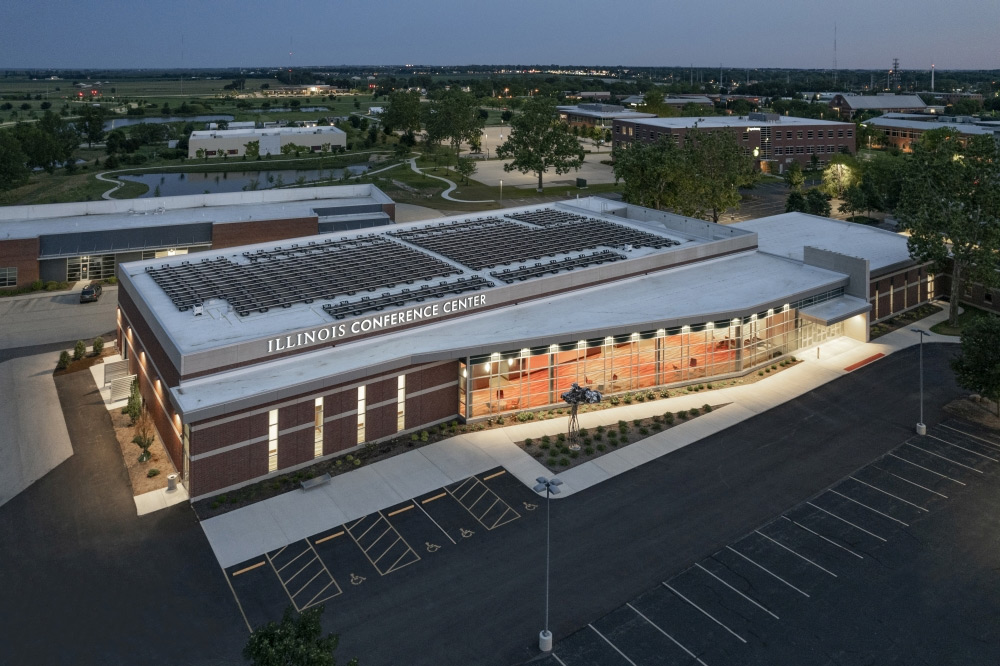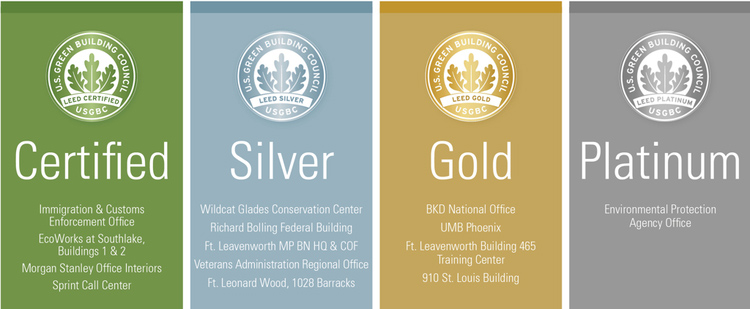1/11/2022

Sustainable design is good for the environment and great for our clients
Cordogan Clark integrates sustainability, renewable energy, and energy efficiency into high-performance building design.
Sustainable principles guide our practice. We have been at the forefront of sustainability for many years.
Environmentally-conscious decision-making propels architectural innovation, cost-saving, and responsible practice. From improving user well-being through natural daylighting and building wellness, to energy efficiency and durable, long-lasting materials and systems that provide long-lasting value, our sustainable designs are good for the environment and great for our clients.
Our LEED Certified Buildings
We have completed LEED designed buildings at all levels, from Certified to Platinum
 Profitable, cost-effective and good for the economy
Profitable, cost-effective and good for the economy
- According to USGBC.org, the top two motivators for green building in the U.S. are client demands and healthier buildings, but their economic benefits are also important.
- Operating cost savings, shorter payback periods and increased asset value in new green buildings and green retrofits are consistently reported.
- Upfront investment in green building also makes properties more valuable, with a growing number of building owners seeing a 10 percent or greater increase in asset value. The percentage of owners reporting that level of growth has nearly doubled since 2012.
- Green buildings reduce day-to-day costs year-over-year. LEED buildings have reported almost 20 percent lower maintenance costs than typical commercial buildings, and green building retrofits typically decrease operation costs by almost 10 percent in just one year.
- Green buildings are for every market and every community. A report on the Los Angeles market indicated that while traditional (non-LEED certified) buildings receive an average of $2.16/ft2, tenants were willing to pay $2.91/ft2 for LEED certified space.
- Source: https://www.usgbc.org/press/benefits-of-green-building
Prioritizing people's health and well-being
- USGBC public opinion research found that almost a third of respondents have had direct, personal experience with bad health associated with poor environments or living situations. We spend about 90 percent of our time indoors and green buildings create spaces that promote health and comfort.
- USGBC’s research also showed that when it came to the green building benefits that resonated the most, respondents said clean air and water and less exposure to toxins.
- Green buildings positively affect public health. Improving indoor air quality can reduce absenteeism and work hours affected by asthma, respiratory allergies, depression and stress and self-reported improvements in productivity. USGBC’s own research reinforces that employees in LEED green buildings feel happier, healthier and more productive.
- A 2018 National Institute of Building Sciences (NBIS) study found that each $1 spent on mitigation activities – such as strengthening buildings and improving drainage conditions – saves $6 in response and recovery costs.
- Green buildings promote resilience-enhancing designs, technologies, materials and methods. To support these efforts, green buildings promote the use of durable materials, thoughtful site selection, rainwater collection, demand response, grid islanding, energy efficiency, onsite renewable generation and more.
- Source: https://www.usgbc.org/press/benefits-of-green-building
An environmental solution
- Green buildings help reduce carbon, water, energy and waste. The Department of Energy reviewed 22 LEED-certified buildings managed by the General Services Administration and saw CO2 emissions were 34 percent lower, they consumed 25 percent less energy and 11 percent less water, and diverted more than 80 million tons of waste from landfills.
- The IPCC report calls for a reduction in energy demand and strong electrification of the building sector, as well as a shift to high-performance lighting, appliances and water heating equipment. Green buildings help building owners and managers, architects, developers and product manufacturers navigate this transition and verify performance.
- According to the EPA, heating and cooling accounts for about 43 percent of all energy use in the United States, which contributes to air pollution and generates the largest amounts of greenhouse gases. By improving energy efficiency, green buildings also help reduce indoor air pollutants related to serious health issues.
- LEED projects are getting results across the board, scoring an average ENERGY STAR score of 89 points out of a possible 100. In a study of 7,100 certified construction projects, more than 90 percent were improving energy performance by at least 10 percent.
- Buildings account for 12 percent of total water consumed in the U.S. while the average person uses 80-100 gallons of water per day.Water-efficiency efforts in green buildings help reduce water use and promote rainwater capture, as well as the use of non-potable sources.
- Standard building practices use and waste millions of tons of materials each year; green building uses fewer resources and minimizes waste. LEED projects are responsible for diverting more than 80 million tons of waste from landfills, and by 2030 that number is expected to grow to 540 million tons.
- Source: https://www.usgbc.org/press/benefits-of-green-building
 Back to Insights Index
Back to Insights Index

 Profitable, cost-effective and good for the economy
Profitable, cost-effective and good for the economy